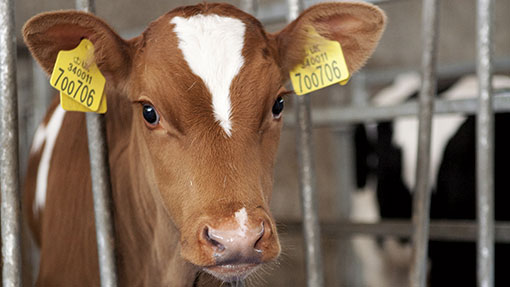
Pneumonia is an inflammation of the lungs. Clinical signs of pneumonia include nasal discharge, dry cough, a body temperature of >41°C, respiratory distress, and decreased appetite. New-born animals that develop pneumonia prior to weaning frequently share the same risk factors as those that develop diarrhoea: failure or incomplete transfer of immunity from colostrum, prolonged exposure to adult cattle, and/or the ventilation limitations of warm housing. Large diurnal temperature variations and transportation or grouping stress can contribute to the development of pneumonia. As with diarrhoea, frequently more than one agent is identified in an outbreak. Herds often experience outbreaks of pneumonia occurring in a number of newborn animals at the same time. Antibiotic therapy is necessary but frequently yields disappointing results. Because of the significant impact that pneumonia has on the growth and future productivity of dairy newborn animals, early identification and treatment are important, but the resolution of significant risk factors is imperative! New-born animals that develop chronic pneumonia seldom recover completely and should be culled. Early vaccination is not an effective means of prevention.
Agents are usually one or a combination of the following:
- Pasteurella haemolytica
- Pasteurella multocida
- Mycoplasma dispar
- Mycoplasma Bovis
- Hemophilus Somnus
- Actinomyces pyogenes
- BVDV
- BRSV
- IBR/PI3
- Salmonella Dublin
The first three agents listed are the most important in the young dairy newborn animal. Frequently pneumonia is first recognized right after weaning when newborn animals are grouped for the first time. In many herds, the first episode that occurs prior to weaning and as early as 2 weeks of age is missed. In large herds or groups of newborn animals, ear infections can be a sequel to respiratory disease and are frequently caused by the same agents.
Click here to view a video that explains Pneumonia in calves.